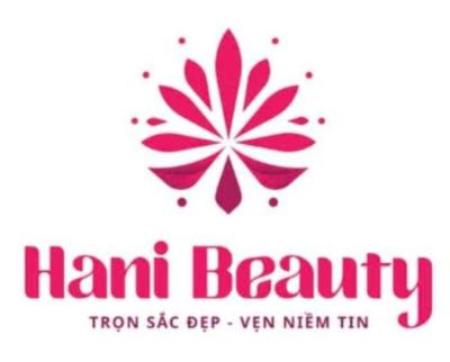1. Why Tools Matter in Eyelash Extensions

Lash extensions are more than just a beauty trend—they’re a precise art that requires skill, patience, and most importantly, the right set of tools. Whether you're applying classic lashes or creating dramatic volume fans, using professional tools not only enhances the final look but also improves safety, hygiene, and client satisfaction.
2. Essential Eyelash Extension Tools for Every Lash Artist
a. Lash Tweezers
Purpose: Lash tweezers are the hands of a lash technician.
Types:
-
Isolation Tweezers: Used to separate natural lashes for accurate application. Ideal shape: straight or slightly curved.
-
Volume Tweezers: Designed to pick and fan multiple lash extensions. Often L- or boot-shaped.
-
Classic Tweezers: Fine-pointed and straight, best for single-lash pickup.
Pro Tip: Invest in high-quality, anti-static stainless steel tweezers to prevent hand fatigue and ensure precision.
>> Read more: The Ultimate Guide to Safe Eyelash Extensions: Tips, Risks & Expert Advice
b. Lash Extensions

Purpose: The actual fibers you apply to the client's lashes.
Types of Lash Materials:
-
Synthetic: Glossy, firm, and bold.
-
Silk: Softer and more flexible.
-
Mink: Lightweight and natural-looking (synthetic mink is cruelty-free).
Curl Types: J, B, C, D, L, and more depending on the desired lift.
Thickness: 0.03 mm to 0.25 mm.
Length: Ranges from 6 mm to 20 mm.
Pro Tip: Customize curl, length, and thickness based on the client's natural lash strength and eye shape.
c. Eyelash Glue (Adhesive)
Purpose: Bonds the extension to the natural lash.
Types:
-
Fast-drying (1-2 seconds): For experienced techs.
-
Medium-drying (3-5 seconds): Ideal for beginners.
Factors to Consider:
-
Humidity compatibility.
-
Retention time.
-
Fume level.
Pro Tip: Store glue in an airtight container with silica gel to prolong shelf life.
d. Lash Tape & Eye Pads
Purpose: To secure the lower lashes and provide a smooth surface for application.
Types:
-
Gel Pads: Comfortable and hydrating, often used for under-eye area.
-
Micropore Tape: Hypoallergenic, flexible, and used to lift lids or lashes for better access.
Pro Tip: Always test tape on the client’s skin to avoid allergic reactions.
e. Lash Brushes (Mascara Wands)

Purpose: Used before, during, and after application to comb through natural and extended lashes.
Why It Matters: Keeps lashes from sticking together and maintains a uniform direction.
Pro Tip: Give a clean lash wand to clients after service for daily maintenance.
f. Lash Cleanser and Primer
Purpose: Removes dirt, oil, and makeup residue for better adhesive bonding.
Use Primer: For oily or challenging lashes to improve retention.
Pro Tip: Clean lashes thoroughly before every application session to avoid early shedding.
g. Nano Mister or Nebulizer

Purpose: Releases ultra-fine mist to cure adhesive faster and reduce irritation.
Benefits:
-
Minimizes fumes.
-
Enhances comfort.
-
Improves bonding.
Pro Tip: Mist from 10–15 cm away to prevent excess moisture.
h. Lash Pallet & Glue Ring
Lash Pallet: Holds lash strips neatly.
Glue Ring: Worn on finger for easy adhesive access.
Pro Tip: Use glue rings with protective film to avoid skin contact.
i. Hygienic Tools
-
Disposable Spoolies
-
Cotton Swabs
-
Microswabs
-
Sanitizers
-
Face Masks
Pro Tip: Maintain a strict sanitation routine to ensure client safety and avoid infections.
3. Optional (But Awesome) Tools for Lash Techs

a. Lash Fan Dryer
A handheld fan to dry lashes faster after misting or during service. Useful to prevent eye stinging or watering.
b. LED Lash Light or Lash Lamp
Provides better visibility, reduces eye strain, and improves lash mapping accuracy.
c. Lash Tile with Lash Map
Use pre-marked tiles for lash mapping. Helps plan sets based on client’s eye shape and desired style.
4. Lash Mapping Tools for Custom Looks
Lash mapping is the blueprint of a perfect lash set. Use:
-
Skin-safe markers
-
Under-eye pads with grid lines
-
Printed maps or templates
Pro Tip: Lash mapping ensures symmetry and consistency across clients.
>> Xem Thêm: The Ultimate Guide to Long-Lasting Eyelash Extensions
5. How to Choose High-Quality Lash Tools

-
Brand Reputation: Stick with trusted lash brands.
-
Material Quality: Stainless steel tools, medical-grade tapes and adhesives.
-
Reviews: Check feedback from other lash artists.
-
Certifications: Look for products tested for allergens and safety.
6. Best Lash Extension Tool Kits for Beginners

Starter kits typically include:
-
2 types of tweezers
-
1 glue
-
Mixed tray lashes
-
Eye pads & tape
-
Mascara brushes
-
Primer & remover
-
Manual or training guide
Top Brands for Beginners:
-
LashBox LA
-
London Lash Pro
-
Bella Lash
-
Stacy Lash
-
Hani Beauty (VN-based)
7. Lash Tech’s Toolkit Maintenance Guide

To keep tools in top condition:
-
Clean tweezers after every use with medical-grade disinfectant.
-
Store lashes in a cool, dry place.
-
Replace glue every 4–6 weeks.
-
Change glue rings and mascara wands after each client.
8. Eyelash Extension Tools FAQ
Q: How often should I clean my lash tools?
A: After every client. Sanitation is essential for safety and lash retention.
Q: Can I reuse lash brushes?
A: No. Always use a new brush for each client to avoid cross-contamination.
Q: What’s the best tweezer shape for beginners?
A: Straight isolation tweezers and 45-degree classic tweezers are easiest to start with.
9. Where to Buy Eyelash Extension Tools
Online Retailers:
-
Amazon
-
AliExpress (for bulk/affordable options)
-
Professional lash supply stores
Pro Tip: Always compare product specs and read reviews before buying.
10. Final Tips for Lash Artists

-
Stay updated with new tool innovations.
-
Invest in quality over quantity.
-
Never skip tool hygiene.
-
Attend lash workshops and upgrade your toolkit annually.
Conclusion
A lash artist is only as good as the tools they use. Whether you're setting up your first lash station or upgrading your current kit, choosing the right eyelash extension tools is a crucial step toward delivering stunning, safe, and long-lasting lash sets. Master your tools, and you master the art.






